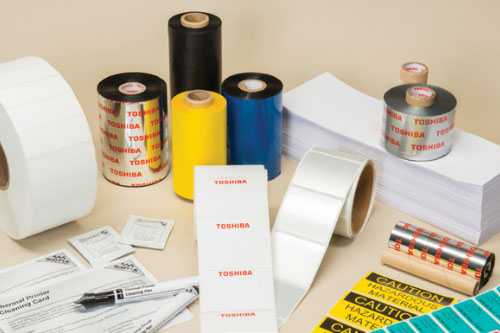WHAT TO KNOW IF BUYING A LABEL PRINTER PART 2: PRINT TECHNOLOGIES – WHAT ARE THEY AND WHICH IS BEST FOR YOUR BUSINESS

Bar code labels are used in nearly every industry, some (retail, manufacturing and healthcare) more predominantly than others. This series is meant to help educate consumers on differences when selecting the proper product for your specific application.
To begin with, there are two types of print technology used for labels:
• Thermal transfer
• Thermal direct
As their names imply, both use heat to create the printed information, but they do so in different ways.
THERMAL TRANSFER
This style transfers ink from a ribbon to the paper using heat. The printer ribbon contains a layer of ink and paper-based or synthetic labels that can absorb the ink. As the heated print head passes over the ribbon, ink is released and the image is created.
Thermal transfer technology produces a very clear printed image that is very stable and long lasting. Because the image is made with ink, which is absorbed and effectively becomes part of the label stock, it can’t be rubbed off and won’t fade or smudge.
Thermal transfer is therefore ideal for labels that need to last a long time, or labels that will undergo harsh conditions or processes. Examples include asset tagging, laboratory or medical specimens, long distance shipping, outdoor use, chemical or hazardous goods containers, labels that will be heated, frozen, or disinfected.
No matter what the application, a thermal transfer print will always outlast a direct thermal print, and globally, 80% of all label printing uses thermal transfer technology.
DIRECT THERMAL
This style does not use ink, and therefore has no ribbon. Instead, it uses thermal paper which has a leuco dye coating that changes color when heated. As the paper passes over the thermal print head, it changes color to create the image.
Direct thermal printers also produce a clear image and, because they use no ribbon or ink, are lighter, cheaper and easier to operate (although this should be offset against the cost of replacing print heads more frequently). Portable printers, for when label printing is needed in the field, all use direct thermal technology.
But the printed image from direct thermal is less stable than a thermal transfer image. This is because the thermal paper remains sensitive to heat, so the image is prone to fading in bright light or darkening when exposed to heat. (Think of what happens to a grocery store receipt left in the sunlight) Even the friction from a scratch or knock can cause the label to blacken.
So direct thermal printing is a very cost-effective way to print labels that only need a shorter life and which will have relatively stable conditions. It’s used for receipts, parking tickets, price labels on retail goods, and by field service technicians, government service staff and utility companies.
As you can see, the type of print technology you choose will very much depend on what you are labelling and why. Take into account how the labels will be used, specifically their expected life and their treatment during their life, remembering that the primary goal of a label is to remain legible.
To read part 3 on Print Heads CLICK HERE